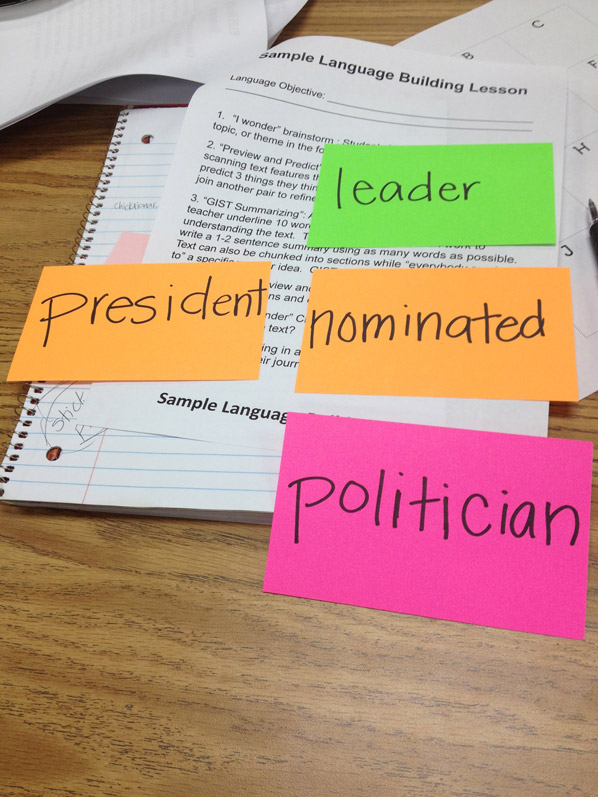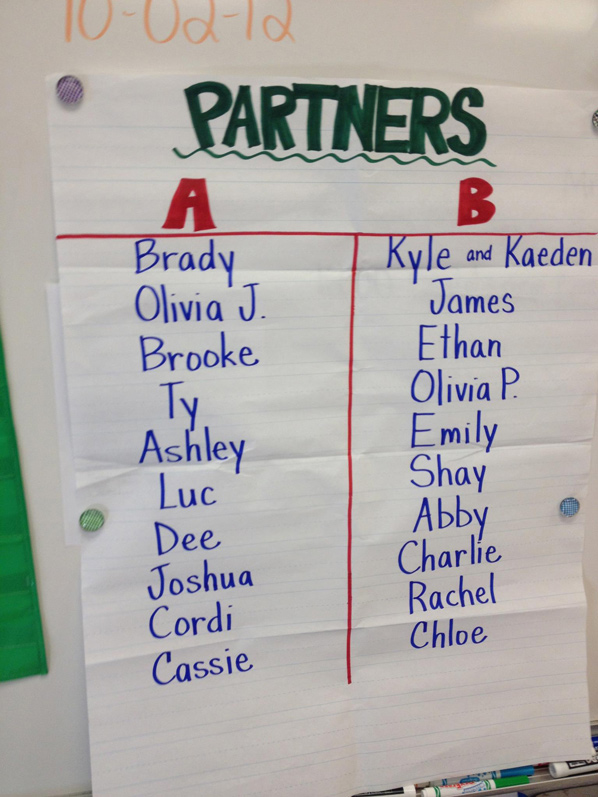Let’s Review! Actively Engaging Your Students in Reviewing Content
Here are a couple of ideas that take about 5 minutes of class time and get learners actively processing content from previous lessons.
Bricks and Mortar - A Critical Vocabulary Review Activity
Give students 8-12 words from your academic word wall or word list written on index cards or post-it notes.
For 2-3 minutes, students work in pairs or triads to choose 3 words to be the “bricks” and create meaningful sentences (orally or written) that use all three words. The “mortar” is the words or phrases that help them relate or connect the “bricks.”
Example “bricks”: perimeter, length, width
Example sentence using “bricks” and “mortar”: To find the perimeter of a rectangle, you need to measure the length and width.
After the students have created a few sentences, groups share out the sentences.
During the sentence creation phase, you can monitor the students for understanding of the important words and modify or adapt the strategy as need for individual students or groups. For example, some students may need more prompting or support in order to create a meaningful sentence.
Be sure to allow at least half of the groups to share out sentences for successful monitoring. You can use response chaining to manage response rates and ensure whole class participation in the sharing phase. As the learner or group of learners share a sentence, ask the rest of the class to evaluate the sentence.
- Is it correct?
- Is it partially correct? What needs to be changed or added to make the statement correct?
- Is it incorrect? Why?
The Bricks and Mortar activity gets your students processing the meanings of the declarative knowledge needed to be used in the application to synthesis levels of thinking and doing required in the unit goals and moves them towards the mastery level of your learning scale.

Paired Verbal Fluency - A Oral Pair Share Activity
Begin by pairing up students. I usually pair students within their zone of proximal development so that one student is slightly more proficient and can provide a perspective that the other student may not have thought about or considered.
You will need a stopwatch or timer to monitor the talking intervals.
Assign or have each group define who will be “Partner A” and “Partner B.”

Give the following directions:
When I say go, partner A will begin talking about _________(give topic for review). Partner B will actively listen, but not speak. Partner A will talk for 60 seconds and may say anything he/she knows or thinks about the topic. You may look in your notes or book to jog your memory.
You can:
- State facts and list what you know about the topic
- Ask questions for clarification
- Describe a mental images related to the topic
- Make a text-to-self, text-to-text, or text-to-world connections
- Summarize the main points
- Draw conclusions
- Make a claim and argue the point with support from the information learned
After 60 seconds, I will say “switch” and partner B will begin talking while partner A actively listens. Partner B cannot repeat anything partner A has already said. Partner B will talk for 60 seconds while partner A listens.
After 60 seconds, I will say “switch” and partners will repeat the process for 40 second intervals and then 20 second intervals.
The Paired Verbal Fluency activity takes just 4 minutes of class time. Each student will have 2 minutes of talking and 2 minutes of listening. During the partner conversations, you will be able to monitor your students and, when needed, adapt and modify how unique students review content.
Final Thoughts
After the review component of the lesson, you can reflect on the instruction by simply asking “Were my students be able to recall previous content?” If the answer is yes, you are ready to proceed to deeper understandings. If the answer is no, you may want to consider re-teaching before moving into activities designed to deepen understanding.
Effective reviews are brief and engaging. Using components of macro-strategies such as summarization, questioning, and clarifying, you can engage students in a review of content that highlights the critical information and strengthens those dendrite highways in the brain.
Happy teaching,
Kelly Harmon
